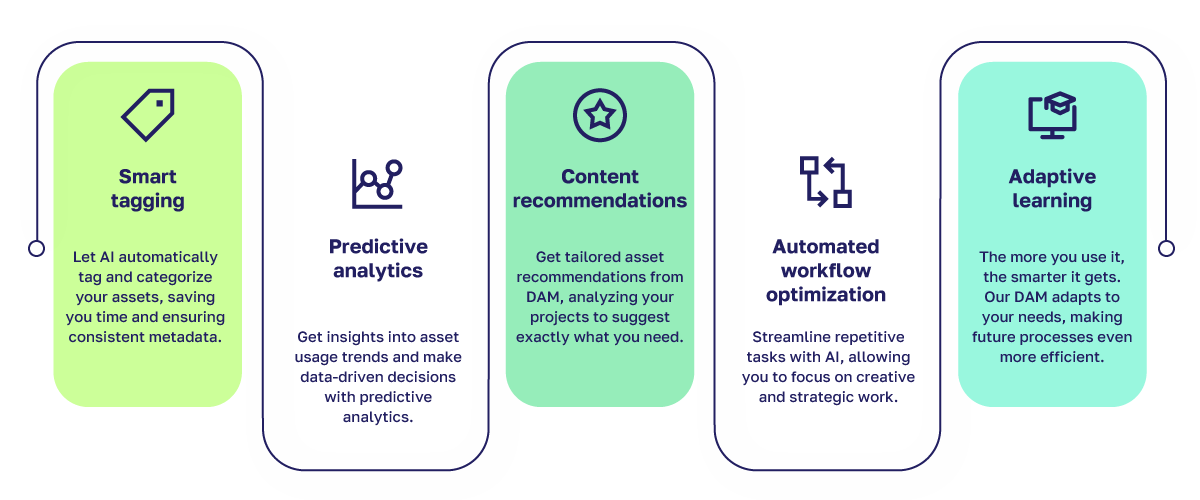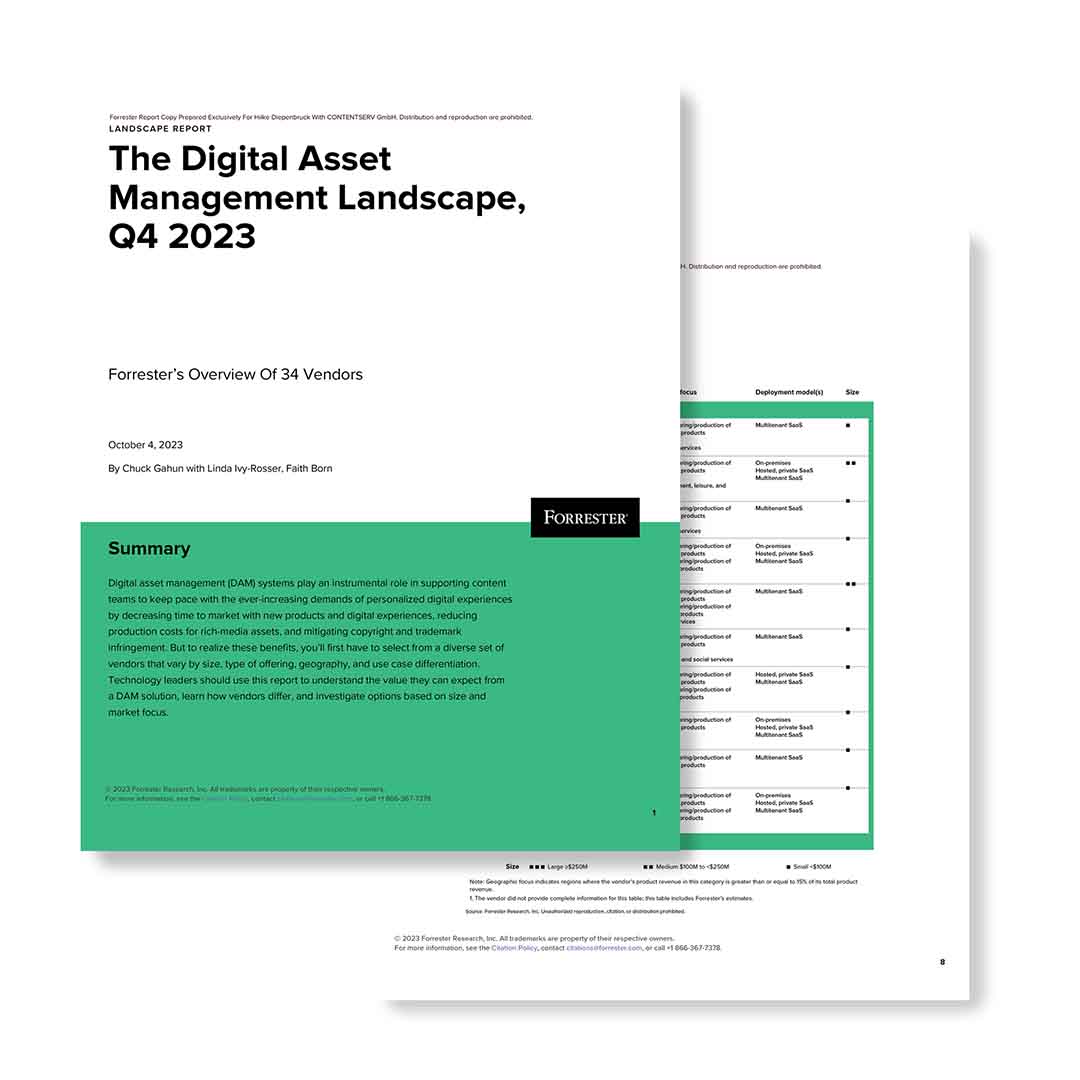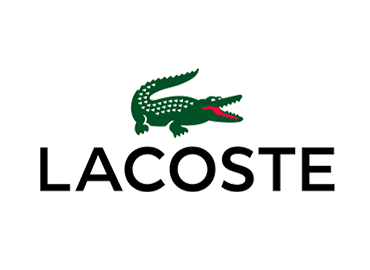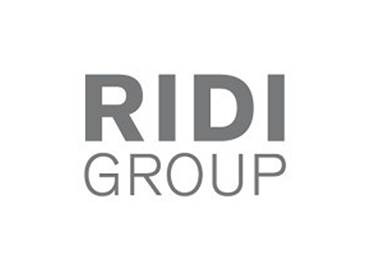- Home
- Digital Asset Management
Take control of your digital assets like never before. Centralize your media, increase asset velocity, and drive better engagement with our advanced Digital Asset Management (DAM) system.
Unified. AI-powered. Digital asset hub.
Organize
Import, export, and categorize digital content in a centralized hub for enhanced discoverability and control.
Access
Give stakeholders secure access to digital assets, saving time on searches and re-creation.
Manage
Track digital rights and usage to prevent costly violations and reduce redundant storage expenses.
Syndicate
Automatically convert and export digital assets in the correct size, format, and color for each channel.
say that the quality of a product image is “very important” in their purchasing decision.
say they are under pressure to create assets and deliver campaigns more quickly.
Experience DAM.
What is Digital Asset Management (DAM) system?
DAM software is your central hub for managing the entire digital asset lifecycle — from creation to storage. It offers accessibility to digital files and integrates with other software tools for efficient project management. With a DAM system, you can enhance brand management and ensure the right use of digital assets.
Share everywhere.
Amplify brand growth
Improve brand consistency and give teams quick access to the most up-to-date digital content to offer your customers an on-brand experience every time.
Localize digital content
Edit, approve, and adapt digital files to suit specific languages or markets, and effortlessly share them with digital, marketing, and sales teams globally.
Streamline collaboration
Leverage AI-driven asset discovery, automated content adaptation, and built-in proofreading to help teams create, update, and manage digital assets together.
Optimize asset performance
Leverage analytics to understand which assets are most effective and adjust strategies to ensure every asset is used to its full potential.
Why do you need a DAM system?
A DAM system is essential to transform a cluttered digital asset collection into an organized, easily accessible library. It’s the backbone of efficient content management, ensuring consistency and saving time in the creative process. The larger your digital asset library, the greater your need for DAM software.
Reimagine brand success with Contentserv’s next-gen DAM
AI-driven optimization
Contentserv’s AI-powered DAM system boosts asset management with automated tagging and advanced search. Standardized file handling and metadata-driven indexing streamline retrieval, while version control and permissions ensure secure, up-to-date usage.
Effortless integration with PIM
Deliver shoppable ecommerce experiences with full PIM and DAM integration! Contentserv DAM, embedded within our PXM platform, automatically syncs product data and media, providing a marketing portal for easy asset search and management.
Streamlined management on every level
Simplify asset management with DAM. Centralize all activities — uploading, organizing, accessing, and distributing — on a single platform. This eliminates silos and ensures that internal teams and external partners can easily access and manage content.
One stop for all your digital asset needs
Extensive product experience hub: Curate a holistic product experience with relevant images, videos, and documents.
Real-time collaboration: Edit and share digital assets seamlessly with team members, no matter where they are.
Secure access control: Protect your digital assets with customized permissions and robust security features.
Advanced analytics: Gain insights into asset usage and performance with detailed reporting and tracking.
What does Digital Asset Management software do?
A DAM tool is like a high-powered organizer for all your digital files — think of it as a supercharged digital library. It lets you effortlessly store, tag, and find everything from marketing visuals to important documents in one spot.
With DAM, you gain quick access to the exact content you need, right when you need it, without sifting through endless folders. It enhances team productivity, ensures consistent branding, and simplifies collaboration, enhancing how you manage and leverage your digital assets.
AI-powered DAM workflows
Don’t settle for a DAM that just sits around — make it work for you!

What are the benefits of Digital Asset Management software?
Manage your brand the right way with Contentserv
Enhance brand consistency
Achieve brand consistency with DAM software by storing your templates, logos, and guidelines in a controlled environment. Easily access and use approved materials, ensuring all content stays on-brand.
Time and cost efficiency
Save time and cut costs with a DAM solution by streamlining asset management. Automated workflows and quick asset repurposing boost efficiency, getting your content to market faster.
Automate channel-ready product asset distribution
Automate your product asset distribution using DAM software, effortlessly delivering content to platforms like Shopify, Amazon, and Magento. Ensure brand consistency and quick accessibility across all channels.
Seamless integration with your tech stack
Integrate your DAM solution with PIM, CMS, and your design and social media tools to streamline asset flow from creation to distribution. Ensure a smooth workflow across your entire tech stack.
Elevate every interaction.
Amplify every experience.
Provide real-time, engaging, and highly relevant experiences that consistently exceed customer expectations with a unified PXM strategy.
Agile teams leverage DAM software
Marketing
Focusing on streamlining campaigns is key for marketers. Branded portals, asset sharing, and performance analytics make this possible. Dashboards and reporting offer insights and enhance marketing efforts.
Brand management
A DAM solution ensures brand consistency by centralizing assets and guidelines with features like rights management and customized dashboards, so teams maintain a unified brand identity.
Creative and UX
Designers use DAM for seamless integrations and streamlined workflows, boosting efficiency in asset creation and management. Quickly access, update, and manage creative files to accelerate project timelines.
Sales
A single source of truth for digital assets supports sales teams with the latest materials, ensuring consistent messaging and effective outreach to boost sales performance.
IT
Managing a technology stack can be a challenge for IT teams. DAM integrates seamlessly with existing systems, streamlining software management, especially in cloud environments.
How does a DAM system work
Asset collection
Collect
Gather assets via bulk uploads, automated retrieval, or API integration
Assign
Attach relevant metadata (tags, descriptions, and categories) to each asset
Validate
Check assets and metadata for accuracy and quality standards
Asset storage
Centralize
Store all your digital media in a single, secure repository for easy access
Organize
Structure assets systematically with folders, tags, and categories
Manage
Monitor asset versions, ensure catalog accuracy, and handle updates
Asset governance
Control
Implement access controls and user roles to regulate permissions
Audit
Track and log asset interactions to ensure proper usage and compliance
Regulate
Apply guidelines and policies for asset management
Asset enrichment
Enhance
Improve assets by adding detailed metadata, descriptions, and context
Convert
Automatically convert digital assets to meet channel-specific formats
Localize
Adapt assets for different languages and regional preferences
Asset distribution
Synchronize
Ensure real-time asset updates and consistency across all platforms
Publish
Syndicate channel-ready digital assets across multiple channels
Share
Access and share assets with user-friendly interfaces and permissions
Analysis and optimization
Analyze
Track asset usage and performance metrics to gain insights
Measure
Assess effectiveness and identify areas for improvement
Optimize
Refine strategies based on insights to enhance asset performance
Maximize your content value with our integrated DAM software
Always intuitive
Simplify user interactions and accelerate workflows with a user-friendly interface.
Always cost-effective
Improve content ROI and minimize content waste with AI-powered DAM.
Always integrated
Seamlessly connect with top technology platforms to maximize your returns.
Always scalable
Manage expanding assets and improve governance with a flexible DAM solution.
Contentserv DAM

Solutions for your industry
Master your digital assets with our powerful features
-
Asset uploadingFast, guided process for importing and exporting digital assets.
-
Centralized repositoryOne single source of truth for all brand, digital, and media assets.
-
Smart categorizationOrganize your digital assets into categories for easy access and management.
-
Intelligent stewardshipUpdate master data records, dynamic models, and workflows with a single click.
-
SEO optimizationManage metadata to enhance SEO performance.
-
Collaborative proofreadingLeverage a collaborative editor for effective proofreading.
-
Analytics and reportingMeasure and ensure data accuracy with quality analytics.
-
User-friendly accessSearch and share digital assets efficiently through a user-friendly portal.
-
Content syndicationDistribute content across multiple touchpoints seamlessly.
-
Content sharingShare on CRM, CMS, creative tools, social media, etc.
-
Robust securityProtect assets with robust security measures and permissions.
Feedback & recognition from our community
Emmi sets the course for seamless customer services
With Contentserv DAM, all your brand and product content lives in one place. Integrate with your favorite creative tools — InDesign, Photoshop, PowerPoint, Figma, and more — via CI HUB. Simply search, place, and update content without ever leaving your workspace. It’s faster, simpler, and always on-brand.
Contentserv recognized in Forrester's Digital Asset Management Landscape, Q4 2023
Download your copy of this exclusive Forrester report* to gain comprehensive insights.
*Only available for Forrester clients.

Frequently asked questions about DAM
What is DAM software?
DAM software, or Digital Asset Management software, is a type of application designed to organize, store, and manage digital assets such as images, videos, documents, and other multimedia content. It provides a centralized system for efficiently accessing and distributing these assets.
What does digital asset management software do?
Digital asset management software enables users to efficiently catalog, search, retrieve, and share digital assets. It helps in organizing files, managing metadata, version control, and ensuring that assets are easily accessible to authorized users while maintaining security and compliance.
What is a digital asset?
A digital asset is a specific type of digital file that holds value and is used in various digital contexts. Examples include high-resolution images, video clips, audio recordings, design files, and documents. These assets are typically managed with a digital asset management system. This system facilitates storage, retrieval, and efficient use by tagging the assets with metadata that describes their content, usage rights, and other relevant details.
Who uses a digital asset management system?
A digital asset management system is used by various professionals and organizations, including marketing teams, creative agencies, media companies, and large enterprises. Anyone who needs to manage and utilize a large volume of digital assets — such as images, videos, or documents — benefits from a DAM solution.
Why should I implement a digital asset management software?
Implementing DAM digital asset management software is essential for efficiently handling your digital content. A DAM platform centralizes and organizes assets like images, videos, and documents, making them easily accessible and manageable. Using a digital asset management system enhances collaboration by providing a single point of access for all users, improves search and retrieval through effective metadata management, and ensures control over asset usage and rights. Overall, digital asset management software streamlines workflows, reduces duplication, and boosts productivity by simplifying the management of digital assets.
What is the difference between a CMS and a DAM?
A Content Management System (CMS) and a Digital Asset Management (DAM) system serve different purposes. A CMS focuses on managing and delivering website content, including text and multimedia, while a DAM system is specifically designed for managing and organizing digital assets like images, videos, and documents. In essence, a CMS is more about content creation and publishing, whereas a DAM system is about asset management and organization.
How much does DAM software cost?
The cost of DAM software can vary widely depending on the features, scale, and provider. Typically, pricing models for a DAM platform include subscription-based fees, licensing costs, or usage-based charges. Factors influencing cost include the number of users, storage requirements, and advanced functionalities. It's best to request quotes from DAM system providers for specific pricing information tailored to your needs.
What are the best practices for implementing a digital asset management system?
To effectively implement a digital asset management system, it’s crucial to follow best practices such as defining clear objectives tailored to your organization’s needs, establishing a consistent metadata strategy to ensure efficient asset retrieval, and organizing assets with a logical folder structure or hierarchy. Additionally, training users thoroughly and setting up robust access controls are essential to maximize the system's benefits and maintain data integrity. Regularly reviewing and updating the system based on user feedback and evolving needs will also help in maintaining its relevance and effectiveness over time.
How can integrating PIM and DAM systems benefit my organization?
Integrating a Product Information Management (PIM) system with a Digital Asset Management (DAM) system offers significant benefits. The integration allows for seamless synchronization of product information and digital assets, ensuring that product details, images, and multimedia are consistently updated across all platforms. This synergy improves data accuracy, enhances the efficiency of marketing and sales processes, and provides a unified view of product information and associated assets. It also reduces manual data entry and the risk of errors, leading to a more streamlined workflow and faster time-to-market for products.
How do you integrate PIM and DAM together?
Integrating your PIM and DAM systems involves linking the organized product information in your PIM with the digital assets managed by your DAM. This process ensures that product data such as descriptions and specifications are automatically associated with relevant assets like images and videos. By doing so, you maintain consistency across all marketing materials and channels, streamline workflows, and reduce manual errors. Contentserv offers pre-built integration options that facilitate this seamless connection, enabling seamless synchronization between PIM and DAM.






